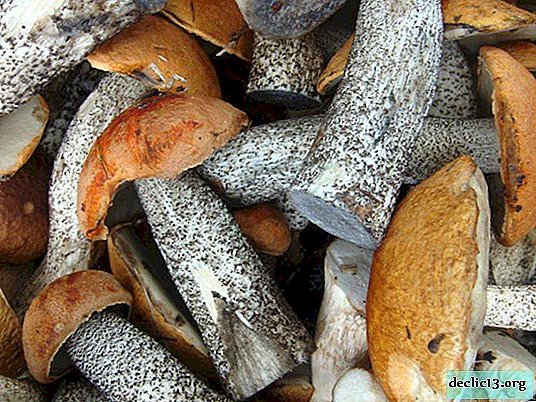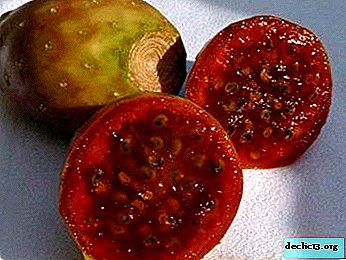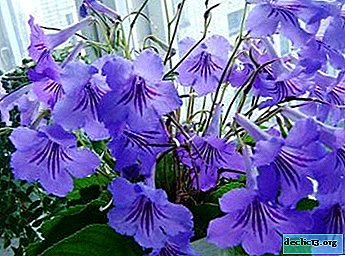Features of growing roses of Cordes. Descriptions and photos of varieties
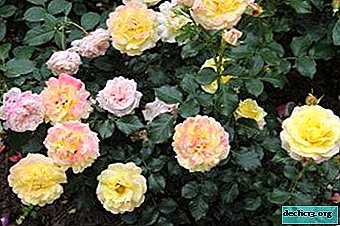
Kordes Roses are a relatively young plant group that has earned its popularity due to its diverse species and resistance to adverse weather conditions.
In the article, we will talk about roses of this type: about care, reproduction, planting, about possible diseases and pests and how to deal with them, as well as present the names, descriptions and photos of the best varieties and sub-grades: Diamond, Souvenir de Baden-Baden, Illusion and some others.
Botanical description and appearance
Bushes reach a height of up to 3 meters, and the minimum growth rate is 100 centimeters. The structure of the shoots is unique: they can grow up, or they can wander along the surface.
Leaf plates of a dark green shade. The color is so saturated that the leaves in the sun shine and seem to shimmer. The stems are distinguished by their strength.
 Fragrance is not always present in flowers.
Fragrance is not always present in flowers.
Flowers are quite large in size, grow up to 10 centimeters in diameter. Terry petals, colors can be very diverse: from plain white to bright purple. Particularly spectacular colors are considered double. For example, pale yellow petals with a red border. All buds are collected in groups of small inflorescences..
Flowering is considered one of the longest. Some varieties may begin re-opening buds after a short break. Other varieties bloom once, but until late fall.
History of occurrence
Rosa Cordes is a hybrid plant, which was obtained as a result of crossing two varieties - Rugoz and Vikhuroyan. The German family company called Wilhelm Cordes and Sons was engaged in breeding. This event took place at the beginning of the 20th century, and the company itself was founded in 1887.
This variety of roses has become popular and eventually developed into a separate species. For this species, the descendants of Wilhelm Cordes continue to engage in flower breeding, and recently the Nikitsky Botanical Garden, which is located in Crimea, has received the right to plant and receive new varieties of Cordes roses.
Distinctive features
- The first and most important distinguishing feature of this variety is frost resistance. These roses can withstand temperatures down to -40 degrees. That is why they are widespread in Canada and even in Alaska.
- Cordes is also popular due to its strong immunity to many types of diseases and pests.
Is it possible to grow in open ground?
The answer is unequivocal - not only possible, but necessary. Firstly, the rose will perfectly tolerate all climatic differences. And secondly, for home cultivation, this variety has too large dimensions.
But this flower will fit perfectly into the landscape design of any garden plot.
Description and photos of subsorts
Diamond
The flowers of Kordes Brilliant are medium sized, bright red with a slightly orange tint. It is considered one of the most striking subsorts. To the touch slightly terry. Petals gather in a bowl. Differs in bloom for a long time. Leaf blades are dark green, shine in bright light. In height, the variety grows to two meters. The aroma is faint, barely perceptible.

Souvenir de Baden-Baden
It was bred in 2000. Variety with a unique color. All petals are creamy pink with a more intense mid color. On the middle petals there is also a pink finish. The whole flower looks quite magnificent thanks to its serrated edges. The bush does not weave, grows up.

The best varieties
Illusion
The color of the petals is scarlet. The leaves are oval, dark green. The maximum height is about three meters, it has the ability to weave.

Quadra
It got its name due to the appearance of the middle - there the petals are clearly divided into four equal zones. Cherry Blossoms. But this variety has one drawback - the petals turn pale in the sun.

Sympathy
The bush is not only tall (up to three meters), but also wide (up to 2.5 meters). The peculiarity of this rose is that its powerful shoots at the ends bend, creating the impression of drooping. Buds can reach maximum performance - up to 10 centimeters.

Adzhimushkay
This rose was bred by domestic breeders in the Crimea. It is distinguished by its height - three meters. Shoots are strong, grow up, densely overgrown with leaf plates.

All Cordes sub-varieties are frost resistant.
Bloom
When and how?
This variety dissolves a huge number of buds. This happens from the very beginning of summer, and sometimes from the end of spring, and continues until late autumn.
Some varieties bloom less in time, but with proper care, opens the buds again. Especially a lot of flowers are observed from late June to early August.Care
Usually, before flowering, in early spring, one of two prunings is carried out. Cut about 10-15 centimeters. It will not be superfluous to feed the plant in March, for this they use nutrient complexes designed specifically for roses.
After the last rose petals have fallen, it must be cut again, but this time more radically. Only 2–3 living kidneys are left for the winter, the remaining length is removed.
What to do if it does not bloom?
Correct errors that result in a lack of flowering. There may be several.
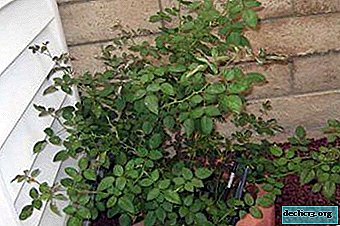 Lack of extra power. In addition to the fact that the soil must be loose and fertile, it must also be saturated with organic matter. Therefore, in spring and autumn, the rose must be fertilized, otherwise flowering will not wait.
Lack of extra power. In addition to the fact that the soil must be loose and fertile, it must also be saturated with organic matter. Therefore, in spring and autumn, the rose must be fertilized, otherwise flowering will not wait.- Plant age. If the flower is already quite old, it needs to be rejuvenated - for this, old roses are removed, and new ones that can be obtained from cuttings of adult plants are planted in their place.
- Not enough light. In full shadow, the rose will only grow green mass, and also reach up to the sun.
- Incorrect pruning. It is necessary to remove old and dried shoots every spring and autumn.
- Faded buds. They also take nutrients, so they are immediately cut off.
Use in landscape design
Rattled roses are used by designers quite often. Indeed, thanks to them, you can create any floral arrangement.
Remember to leave at least a meter around for every Cordes rose.
This variety of flowers is perfect for creating live arches., using them you can braid any gazebo, hedge. Coniferous shrubs will be planted near roses - they will slightly shade the plants, but in no case do not arrange a complete shadow.
Step-by-step landing instructions
Seat selection
- Experienced flower growers recommend planting Cordes roses on the hillocks.
- There should be a lot of light. But it is advisable to arrange the plant in such a way that during the hours of intense heat the plant is in partial shade. The health of flowers, their resistance to pests and diseases, as well as the abundance of flowering, directly depends on the amount of light.
- We strongly recommend that you do not plant roses under the trees. They will take away from the flowers not only the whole world, but also nutrients.
What should be the soil?
The soil should not be too wet.. In such a substrate, there is always not enough oxygen, which leads to diseases or the complete death of the plant.
Soil acidity should be neutral. The most optimal indicators of acidity are 6-7.
The substrate must be constantly loosened and replenished once a month.
Seeds
Seeds can be purchased ready-made at the store.. And you can cook with your roses.
 For this, seeds are harvested in late July and early August. Only elastic seeds are used.
For this, seeds are harvested in late July and early August. Only elastic seeds are used.- After collection, the material is placed in a container with hydrogen peroxide (3%) for 30 minutes. Those seeds that have surfaced are thrown away, as they are hollow. At this point, disinfection also occurs.
- The remaining seeds are treated with a growth stimulant.
- After the shell of the seed, you need to soften for more successful germination. To do this, the seeds are mixed with river sand, and then wrapped in a cloth that is saturated with peroxide. All this is placed in a plastic bag and put in the refrigerator.
- Look through the seeds periodically to remove those that are moldy.
- After germination of the boxes they are ready for planting.
Temperature
These flowers easily tolerate frosts. The optimum temperature in the spring and summer is from +15 to +25 degrees. At elevated degrees, it is better to moisten the plant more often. The varieties of roses of Cordes are quite winter-hardy: they can withstand temperatures down to -40 degrees. However, experienced gardeners recommend not taking risks and still cover the flowers before the onset of cold weather.
Watering
Humidification of the soil is carried out twice a week. After each watering, loosen the soil.
Top dressing
Fertilize the plant twice a month before flowering. As soon as the first flowers have blossomed, top dressing is reduced to once a month.
For top dressing, ready-made mineral complexes are used, which are designed specifically for roses.Pruning
This procedure is carried out in autumn and spring. In the spring, only 10-15 centimeters of shoots are cut, but in the fall they cut to the maximum, leaving only 2-3 live buds.
Transfer
Better to do it in the evening. Dig up roses with a large lump of earth and immediately place in a new place. After this, the flower should be abundantly moistened and covered for several days from the sultry sun.
Preparation for winter
Everything is very simple here.
- Just cut the shoots and hide the rest. To do this, you can use a regular bag or a dense plastic film.
- Sprinkle the roots with dry foliage and additional soil.
How to propagate?
 The most suitable way is cuttings. To do this, in the autumn after trimming, many cuttings remain.
The most suitable way is cuttings. To do this, in the autumn after trimming, many cuttings remain.
- You need to choose those on which there will be at least 6 live kidneys.
- Then these cuttings are placed in the ground so that three buds are in the ground, and three more in the open.
- For the winter, cuttings are covered with jars or cropped bottles.
- In the spring, the processes begin to harden. To do this, with the advent of positive temperatures, roses open every day for a short period of time. Start with five minutes. and every day time is increasing.
- Somewhere in a month, roses can be fully opened.
Diseases and Pests
Roses of Cordesa are attacked:
- aphids;
- spider mite;
- rose sawfly larvae;
- rose leaflet;
- thrips;
- powdery mildew;
- gray rot;
- black leaf spot;
- rust;
- burn shoots.
To combat them, fungicides are used. They are bred strictly according to the instructions. Processing is carried out several times with an interval of 5-7 days.
Roses have always been considered royal flowers. Therefore, care for them should be appropriate. But the appearance of these plants is worth it.

 Lack of extra power. In addition to the fact that the soil must be loose and fertile, it must also be saturated with organic matter. Therefore, in spring and autumn, the rose must be fertilized, otherwise flowering will not wait.
Lack of extra power. In addition to the fact that the soil must be loose and fertile, it must also be saturated with organic matter. Therefore, in spring and autumn, the rose must be fertilized, otherwise flowering will not wait. For this, seeds are harvested in late July and early August. Only elastic seeds are used.
For this, seeds are harvested in late July and early August. Only elastic seeds are used.

